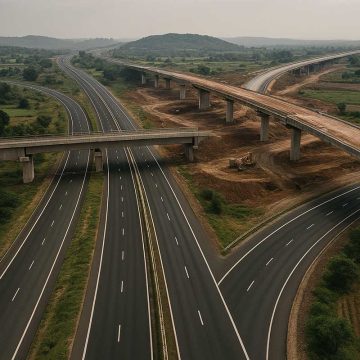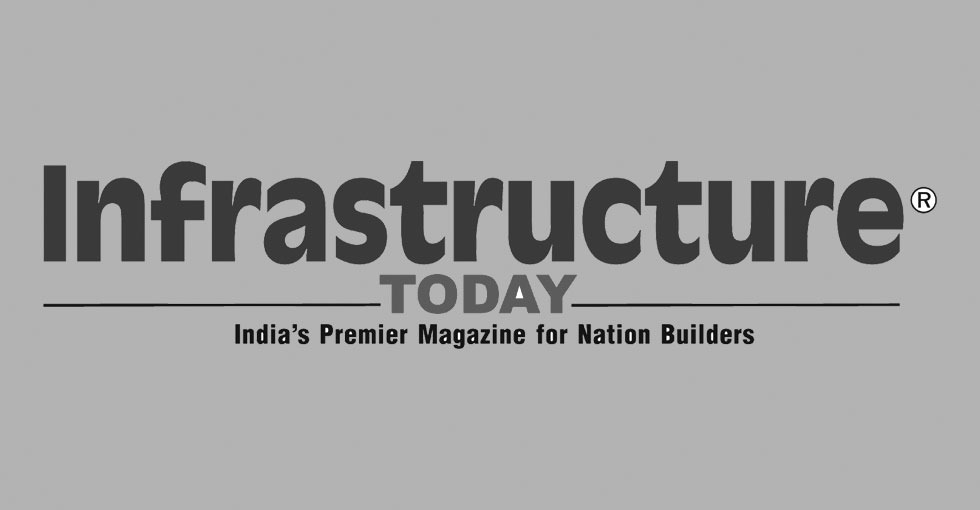The country’s data centre capacity is projected to double to 2.3-2.5 gigawatts (GW) by March 2028, reflecting buoyant demand across enterprises and consumers, according to a Crisil Ratings study. India’s data centre industry is poised for robust expansion, with operator revenue expected to reach approximately ₹200 billion ($2.4 billion) annually by fiscal 2028. This translates...
FlashNews:
Union Cabinet Clears $146 Million Delhi Metro Expansion, Adding 16 km and 13 Stations
Saleem Ahmad Takes Charge as RVNL CMD, Steering Shift to All‑Infra Vision
Clean Leap: Manohar Lal Inaugurates First Unit of 2,000 MW Subansiri Hydropower Project
DFCCIL Pushes Fast-Track Plan for Gati Shakti Cargo Terminals
Chhattisgarh, GAIL Ink MoU for 1.27‑Million‑Ton Gas‑Based Fertiliser Plant
Noida International Airport Taps Tech Mahindra for 24×7 Cybersecurity Command Centre
Centre Approves ₹8.87 Billion Mumbai Marina to Boost Coastal Shipping and Maritime Tourism
PM Surya Ghar Rooftop Solar Scheme Crosses 1.95 Million Installations, Delivers 770,000 Zero Bills
Waaree Gets ALMM-II Nod for 5.25 GW Solar Cells
Inox Wind Secures Repeat 100 MW Order from Jakson Green
SITA Strengthens India’s Digital Aviation Infrastructure as Passenger Growth Accelerates
India moved from power scarcity to sustainability, says Piyush Goyal
GM Rao Urges Andhra University Alumni to Drive Innovation, Entrepreneurship and India Growth Story
India Begins Hydrogen Car Trials as Minister Joshi Drives Toyota Mirai to Parliament
MNRE Refutes Financing Pause; Calls for Expansion into Upstream Solar Manufacturing
IndiGrid to Acquire Gadag Transmission for ₹3.72 Billion
India Launches First All‑Electric Tug at Deendayal Port, Accelerates Green Maritime Shift
Bharatmala Pariyojana Executes 61% of Phase‑I Highway Targets, Boosts Freight Speed and Connectivity
Waaree Tops India’s Solar Module Shipments in Q3 2025, Reinforces Global Competitiveness
Tag: Crisil Ratings
Accelerating India’s High-Speed Future
Currently, 22 countries operate high-speed rail or bullet train networks, while another 16 are developing them at various stages of completion. India joined this global movement in 2017 with the launch of its first bullet train corridor on the commercially vital Mumbai-Ahmedabad route. The service was initially expected to begin in 2023, but land acquisition...
Hybrid Growth to Power India’s Rs 3.8 Trillion Clean Energy Surge
Hybrid and storage-backed renewables are set to drive Rs.3.8 trillion in clean energy investments by FY2026-27, powering nearly 40 per cent of new capacity, according to Manish Gupta and Ankit Hakhu. Investment in India’s renewable energy sector is poised to increase at a compound annual growth rate (CAGR) of 55 per cent between this and...
India’s Airline Profitability to Dip Amid Airspace Disruptions and Safety Concerns: Crisil Ratings
However, a rebound is expected in the second half of the fiscal year, with the overall traffic projected to grow by 7-9 per cent, in line with last year’s 8.1 per cent. The Indian aviation sector is expected to witness a moderation in operating profit by 11-14 per cent this fiscal, according to Crisil Ratings....
New HAM Bidding Norms May Sideline 25% of Road Developers, Says Crisil Ratings
India’s Ministry of Road Transport and Highways (MoRTH) introduced the changes on July 10 to curb aggressive bidding and improve construction quality. Revised bidding criteria for hybrid annuity model (HAM) road projects could temporarily disqualify one in four existing developers, according to a new analysis by Crisil Ratings. The Ministry of Road Transport and Highways...
Strengthening Balance Sheets Could Spur Future Growth
The Indian primary steel industry has witnessed a sharp reboundfrom the second half of fiscal 2021despite the challenges posed by the Covid-19 pandemic. While the pandemic-related risks persist, sector analysts at CRISIL Ratingsbelievegrowth momentum for the steel industry could sustain in FY2022. This would help steel makers fortify balance sheets even as they continue to...
Banks Rs.5 trillion NPA worry
The slippages tend to mars banks profitability, but the tide seems to be turning with sharp reduction in SMA 2 cases and better NPA recovery prospects.As much as Rs 5 trillion of bank loans have deteriorated into non-performing assets NPAs in fiscal 2018, taking the total slippages in the past three fiscals to Rs 13 trillion.
Need Rs.26 lakh crore for infra financing
The government will have to undertake a massive provisioning of Rs 26 lakh crore for the next five years to finance infrastructure projects to boost the ´Make in India´
Banks may find it difficult to raise non-equity core capital
Crisil Ratings President Ramraj Pai opined that banks may find it difficult to raise Rs 1.4 trillion worth of non-equity-based tier-I capital, as mandated by Basel III norms, because of complexity involved in these debt instruments. According to Basel III norms, banks will have to raise
1.3 trillion as equity capital and up to Rs 1.4 trillion as non-equity tier-I capital









